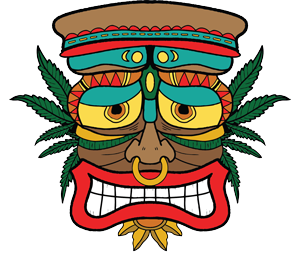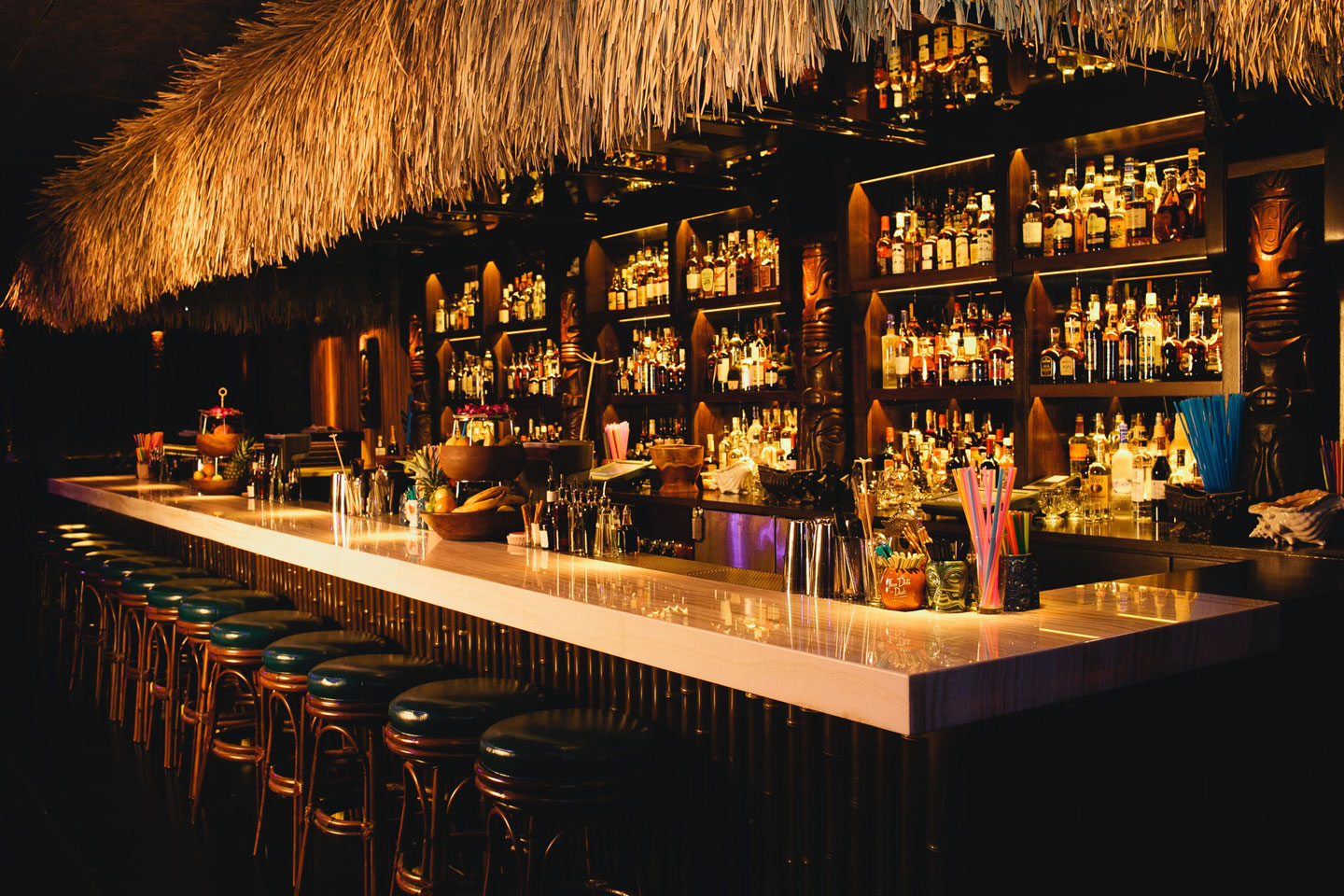All About Tiki Bars
Why Do Tiki Bars Look Like They Do?
A Brief History About These Iconic Style Bars
No matter where you go in the world, someone you know has a Tiki bar. It could be an entertaining joint in the city centre that attracts thousands of customers every night who are looking to relax and escape the stresses of the world around them, or it could be a humble little place built in your friend’s back garden.
I can’t help but feel at ease whenever I’m in a Tiki bar. I can’t explain it; there is just something very comforting about both the visuals and being in an outdoor-style bar. Its calming qualities easily enhance any bar that gives off a Tiki-style vibe, which means if I want to relax specifically, then I know where to go.
Strangely though, I have seen them both back home and in tropical countries. When I see a Tiki bar, I think of warm countries near the equator, with a perfectly imperfect bar built on the beach, listening to the waves crash by the ocean while sipping an exotic cocktail. But the phenomenon has grown further than beaches, and now we see it globally as a go-to style for your home bar or a commercial one.
Which made me think. Where do Tiki bars come from? Is it really to do with the beach atmosphere? Or does it have more of a deeper meaning than that?
Well, before we answer that question, we need to understand the answer to another one; Where does the word ‘tiki’ come from?
Tiki is a Maori word and seems to have a plethora of meanings depending on whom you ask. Some of the possible meanings include:
The very first man, or the God that created that man.
A decorative style using bamboo, and other representations of the Polynesian (Pacific islands) culture.
An image of a Polynesian God made with stone or wood.
A carved talisman in human form.
When we refer to tiki, though, we usually (but not always) mean the first bullet point listed. This is generally depicted in the Pacific culture as a mythical creature, thus adding to its mystique.
You see, the Polynesians who travelled to places like Hawaii over a thousand years ago were extremely spiritual beings. They believed that the Gods, the people and the land had a mutually beneficial relationship. In other words, if they kept the Gods happy, then the Gods would let the land thrive and in essence, give the people a much better life. These four major Gods were:
Kanaloa – The God of the sea
Kane – The God of light and life
Ku – The God of war
Lono – The God of fertility
The high chiefs in Polynesian culture were thought of as direct descendants of the Gods and as such, could communicate with them spiritually and keep them happy, which in turn would provide the people with more fertile land and, in general, a happier and easier life.
In their communication, they would make offerings. These offerings ranged from animal sacrifice to making whale tooth pendants and feather cloaks.
But the most powerful one of these was a sculpture. A sculpture of a Tiki God made from either stone, wood, jade or bone. Each of these tikis has its own meaning. usually of strong concepts such as prosperity, power, wisdom or knowledge.
As a result, Tikis are still valued today for their mystical and spiritual qualities and are respected by all cultures, not just the Polynesian ones.
So…What Does That Have To Do With Beach Bars?
It doesn’t. It is about ancient Polynesian culture rather than bars on the beach. However, the bars are made in a tiki style. This can be made with bamboo sticks which is more common on tropical islands since bamboo is plentiful, or it can be styled using stone or wood.
It’s not just the bars that give off the tiki style. In some bars, even the cups are tiki mugs. Among other things, the mugs in more modern-day Tiki bars are used for more of an artistic purpose. This led to more home Tiki bars becoming a thing for people both equally in touch with their spiritual side and looking to show off their artistic flair.
These bars can be made inside but tend to look naturally stunning in outdoor settings such as on an outdoor patio area or on a beach by the seafront. This is why you think of beaches when you think of a Tiki bar, but this is coincidental. Although there is some indirect connection to the beach, since both Polynesians and most people that feel at home on the beach are in touch with their spiritual side and can unlock that sense of calm by drinking or smoking by the beach, listening to the waves go up and down and absorbing the outdoor beauty around them.
Tiki-style bars do not compromise the outdoor beauty; they in fact enhance it, which is why they have been steadily growing in popularity in recent years.
Is that why Tiki bars have things like hula girls as well?
Erm… Not really. Tiki bars sometimes have hula girls because of the Polynesian culture as opposed to the relaxed, spiritual lifestyle that comes with being on the beach. Almost all Tiki bars are erected to celebrate Pacific Island culture and embrace it. So when you see typical Hawaiian retro-style objects, hula dancers and tropical cocktails presented in extravagant glasses, they are paying homage to the world and lifestyle of Polynesia.
Nowadays, there are slightly different styles of Tiki bars to incorporate other cultures as well (typically the local culture of where the bar has been built), but in general, they are predominantly based on the Hawaiian style, whether the people who build the bars realise it or not.
Sounds great! I wish there were more places like this in Thailand.
There are. One of the draws of Thailand is the ‘mai pen rai’ or (‘sabai sabai’) lifestyle which, makes it perfect for a Tiki bar, whether that is on one of its many islands or right in the city centre. Lucky Lukes Tiki Joint is Located right on the ground floor of Nana plaza and offers a relaxing Tiki bar vibe in the heart of all the action.
There is nothing better than to watch the world go by whilst sitting in a party atmosphere. The Polynesians have got it right; parties don’t have to be a mile a minute; sometimes, it is simply about chilling and letting your mind unwind with such beautiful aesthetics.
On top of that, now that Thailand’s medical marijuana laws have been relaxed, this adds a whole new positive dynamic to the Tiki bar atmosphere. Personally, I’m really looking forward to the next time I sit in a Tiki bar, surrounded by bamboo, lei (the traditional Polynesian flowers) and Tiki designs, and looking at beautiful hula women genuinely enjoying themselves whilst holding a joint in my hand.

